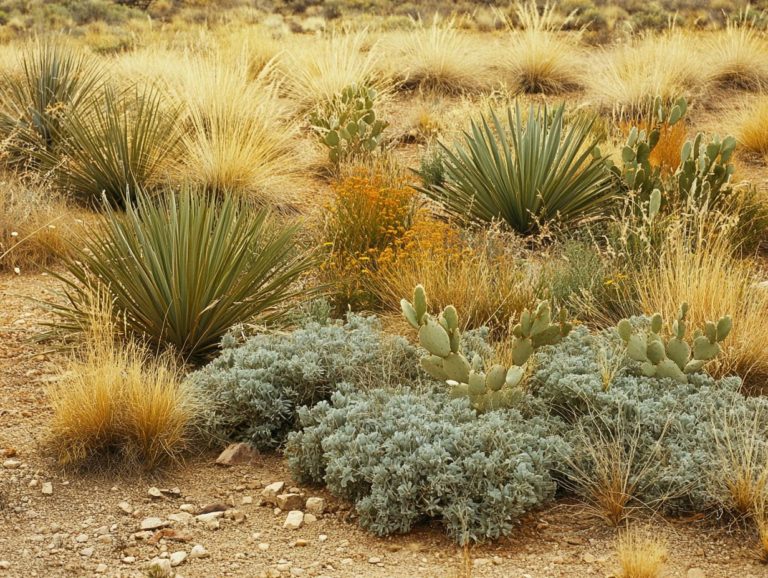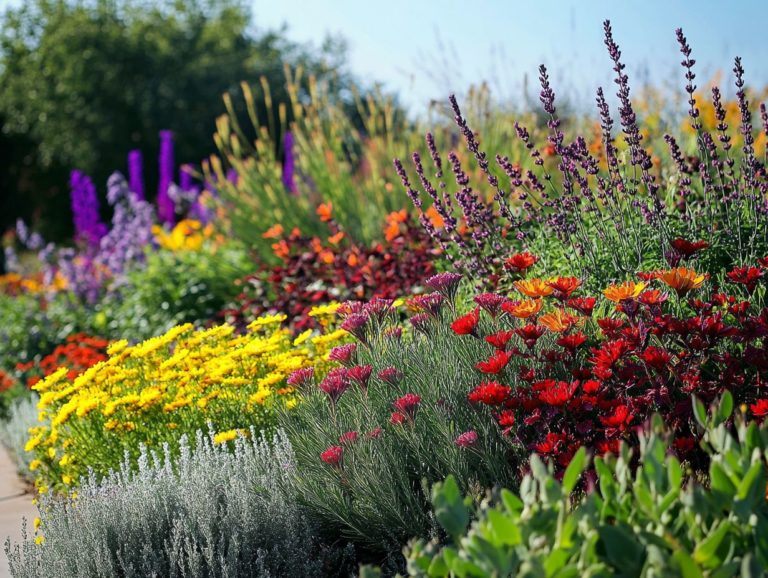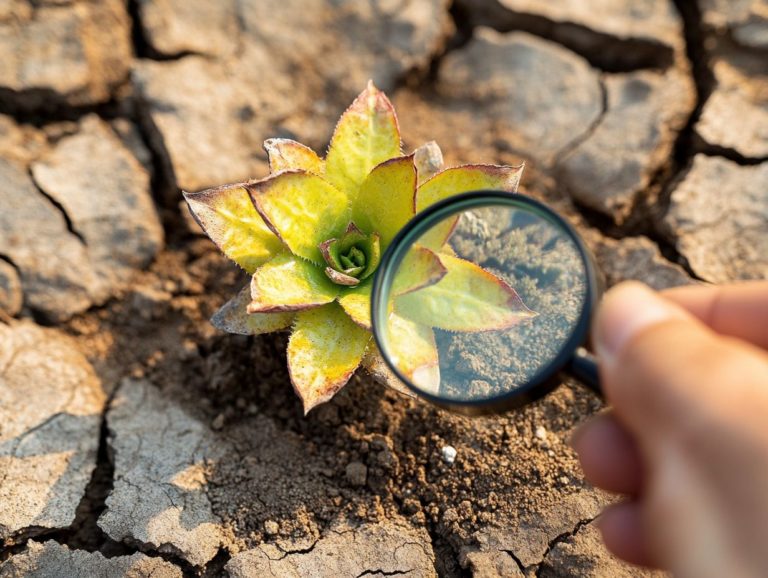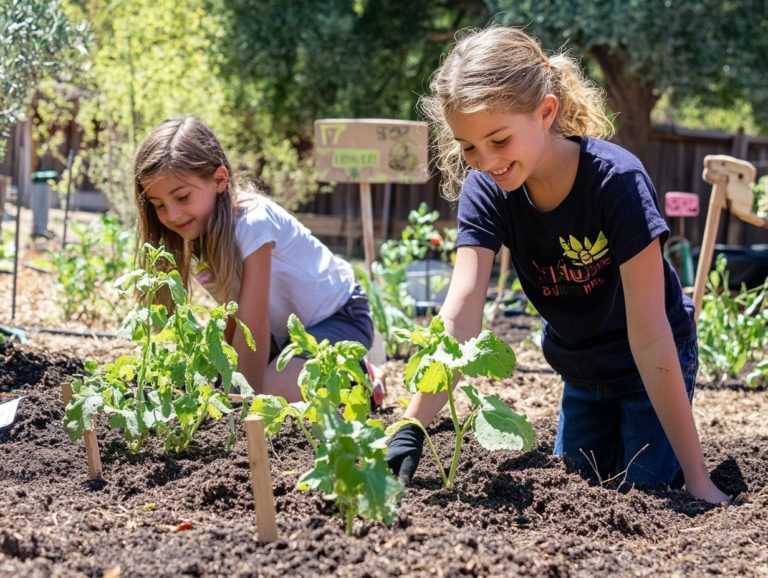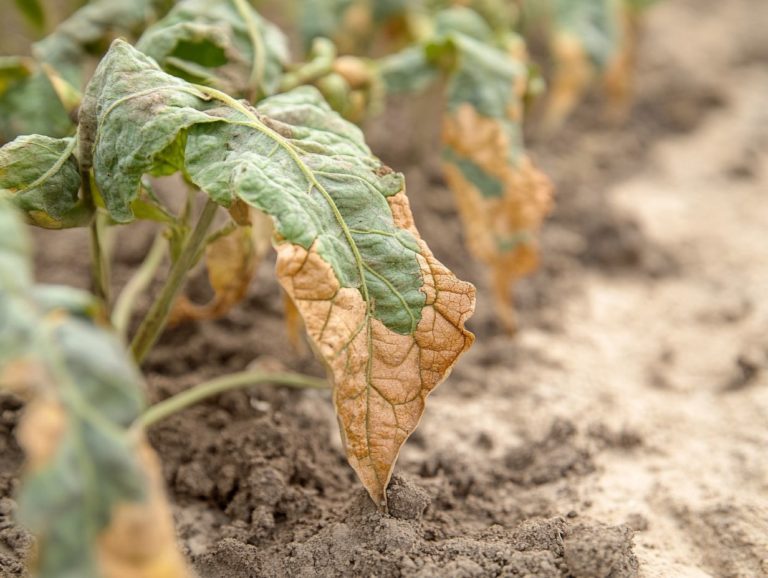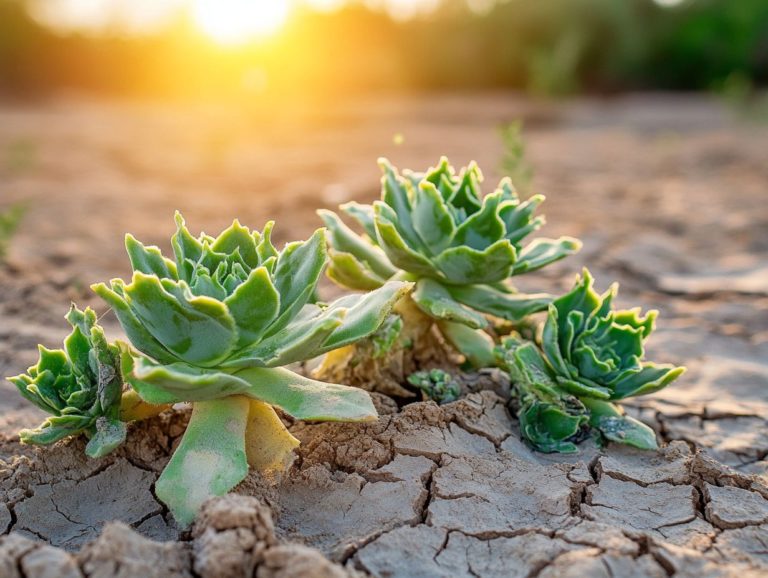What Are the Challenges of Drought Gardening?
Drought gardening transcends mere reaction to water scarcity; it embodies the art of cultivating plants in challenging, arid conditions.
In this exploration, you ll uncover the distinctive hurdles you face as a gardener. From grappling with soil quality to selecting the ideal plant varieties suited for a dry landscape, you will also find effective strategies and conservation techniques that can help you create a thriving drought garden.
Embrace essential tips for maintaining your garden s vitality while minimizing water usage. Discover how to make your gardening endeavors not only sustainable but also successful, even in the driest of times.
Contents
- Key Takeaways:
- Understanding Drought Gardening
- Challenges of Drought Gardening
- Strategies for Successful Drought Gardening
- Tips for Maintaining a Drought Garden
- Frequently Asked Questions
- What Are the Challenges of Drought Gardening?
- What are the main factors that contribute to drought gardening challenges?
- How do I determine if my garden is facing a drought challenge?
- What are some strategies for conserving water in a drought garden?
- Are there any specific plants that are better suited for drought gardening?
- How can I protect my plants from the challenges of drought gardening?
- What are some alternative gardening methods that can help overcome the challenges of drought gardening?
Key Takeaways:
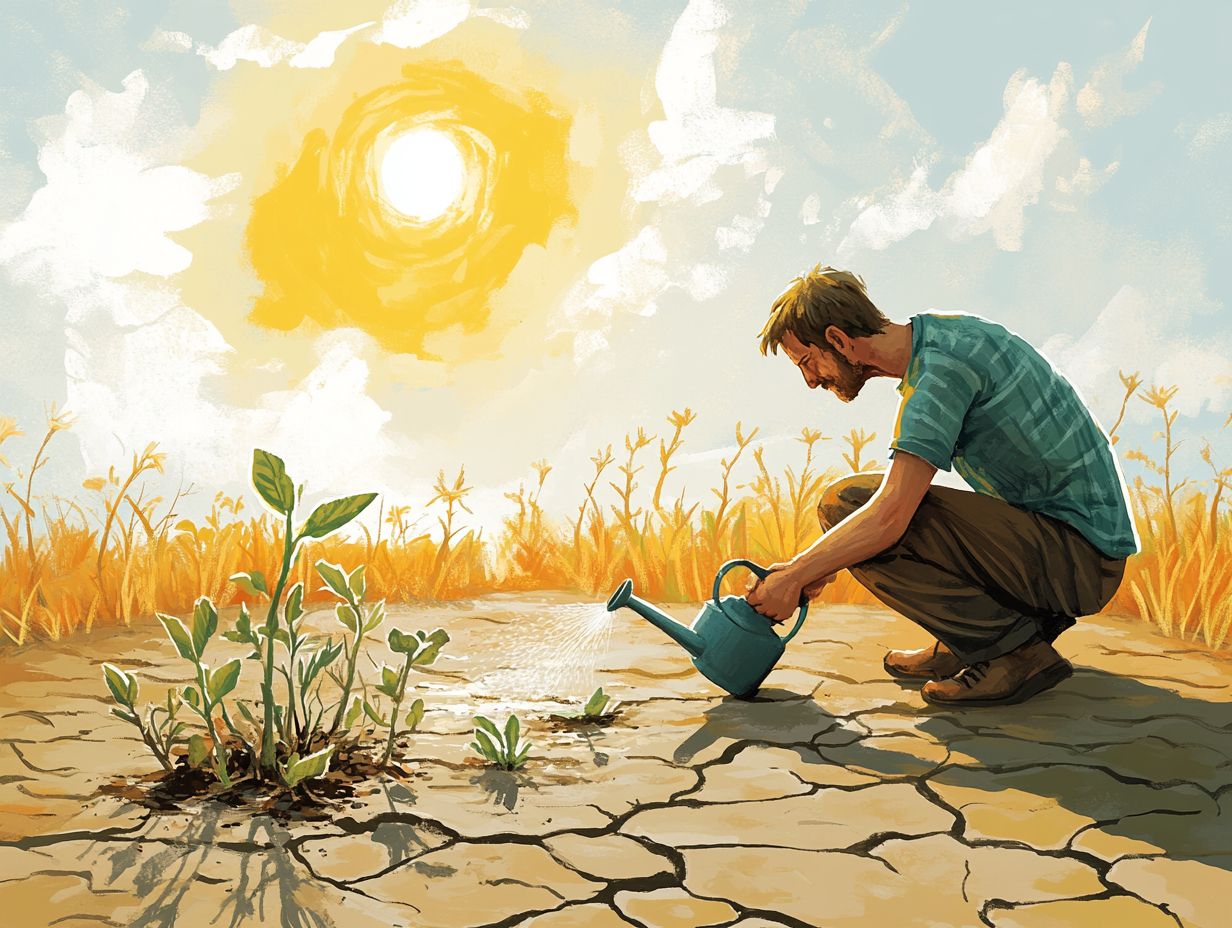
- Drought gardening requires careful consideration and planning due to challenges such as water scarcity and poor soil quality.
- Plant selection and adaptation are crucial for a successful drought garden, as certain plants are more resilient to dry conditions.
- Conservation techniques and using drought-resistant plant varieties are key strategies for maintaining a thriving drought garden.
Understanding Drought Gardening
Drought gardening is an essential practice for cultivating sustainable landscapes that can endure periods of limited water availability. As climate change and rising temperatures become more prevalent, grasping the nuances of drought gardening is crucial for the vitality of your gardens, lawns, and crops.
This strategy emphasizes efficient water management and improving soil quality. It also focuses on choosing drought-resistant plants, allowing your garden to flourish even in the face of extended dry spells.
By employing effective conservation techniques, you can dramatically cut down on water usage while fostering the growth of vibrant, resilient landscapes.
Definition and Purpose
The essence of drought gardening is about cultivating plants in a manner that conserves water while ensuring their vitality and growth in challenging conditions, highlighting the long-term benefits of drought gardening.
This approach saves water and supports sustainable gardening practices that can significantly benefit the environment.
By choosing drought-resistant plants like succulents, lavender, and ornamental grasses, you can create a vibrant, low-maintenance landscape that thrives with minimal effort.
Employing effective moisture management techniques such as mulching and drip irrigation systems helps retain soil moisture and delivers essential nutrients to your plants.
By integrating these strategies, you can reduce your overall water footprint while enjoying a flourishing garden that thrives even in arid climates. This showcases the vital role of mindful cultivation in today s changing climate.
Challenges of Drought Gardening
Drought gardening brings its own set of challenges that demand your careful attention and management. To ensure that your plants not only survive but flourish, it’s important to understand what to consider before starting a drought garden and address water scarcity, which often stands as the most pressing concern.
This scarcity significantly affects soil quality and the health of trees, shrubs, and vegetables. Environmental factors like soaring temperatures and competition from weeds also stress your plants, raising further issues related to pests and nutrient deficiencies.
By grasping these challenges, you can implement effective strategies that enhance plant health and resilience, creating a thriving garden even in the toughest conditions.
Water Scarcity and Soil Quality
Water scarcity poses a significant challenge in drought gardening, affecting both soil quality and the overall vitality of your plants. To tackle these issues effectively, it’s crucial to know what tools are essential for drought gardening, as this knowledge can help maintain moisture for your crops and preserve soil structure.
The result can lead to erosion and nutrient depletion. Improving soil quality becomes paramount; techniques like mulching and incorporating organic matter can greatly enhance moisture retention.
By utilizing efficient irrigation systems, such as drip irrigation a system that delivers water directly to plants’ roots you can ensure that your plants receive the essential water they need.
This approach minimizes evaporation and maximizes hydration, even during extended dry spells. Maintaining healthy soil through these practices not only fosters robust plant growth and resilience against stress but also contributes to food security.
Start planning your drought garden today and join the movement for sustainable landscaping!
Plant Selection and Adaptation
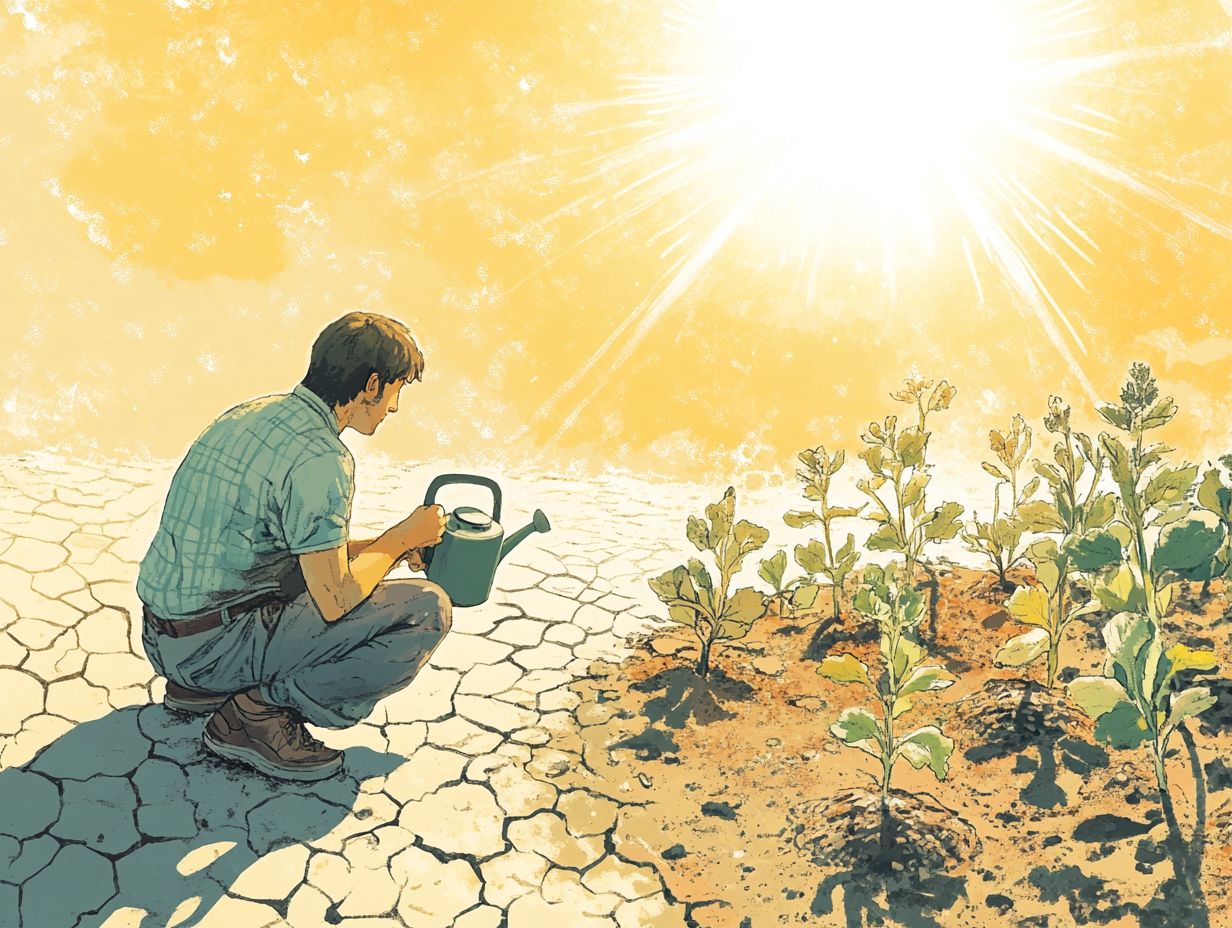
Selecting the right plants is essential in gardening in drought conditions. Certain species possess remarkable adaptations that allow them to thrive in arid environments.
These drought-resistant plants, including specific shrubs, trees, and vegetables, not only conserve water but also enhance the overall health of your landscape. Varieties like resilient lavender or hardy agave can significantly improve soil structure and reduce erosion.
Native plants, such as the mesquite tree and yucca, are particularly well-suited for low moisture levels. Their deep root systems reach into underground water sources, providing stability and nourishment.
Understanding how these species adapt is key. They often have waxy leaf coatings and modified photosynthesis processes that help them survive. By cultivating these plants, you can create sustainable gardens that flourish even with limited water availability.
Strategies for Successful Drought Gardening
Implementing effective strategies is crucial for successful drought gardening. These techniques allow you to conserve water while sustaining vibrant landscapes.
Key strategies include:
- Efficient irrigation systems
- Thoughtful mulching practices
- Selection of drought-resistant plant varieties
By realizing the importance of deep watering and effective soil management, you can enhance your water usage efficiency. This ultimately bolsters the resilience of your gardens, lawns, and crops against the challenges of drought.
Embrace these best practices to ensure your landscapes not only survive but truly thrive!
Conservation Techniques
Conservation techniques are essential for maximizing water efficiency and minimizing waste in drought gardening.
Incorporating strategies like mulch and advanced irrigation systems can significantly boost your garden’s resilience during dry spells. Applying a layer of organic mulch suppresses weeds, reduces evaporation, and maintains steady soil temperature key factors for healthier plants.
When you implement efficient irrigation methods, such as drip systems or rainwater harvesting, you enable targeted watering that ensures moisture reaches the roots without unnecessary runoff. These practices conserve valuable water resources and foster an environment where your plants can flourish, even under challenging conditions.
Drought-Resistant Plant Varieties
Incorporating drought-resistant plant varieties is vital for successful drought gardening. These species thrive in low moisture conditions, making them well-suited for agriculture.
Consider native shrubs like Texas sage and desert willow. They require minimal watering and attract beneficial pollinators, enhancing biodiversity in your garden.
Additionally, trees like the acacia and mesquite contribute to a sustainable landscape, providing shade and enriching soil quality with their deep roots.
For vegetables, look into desert-hardy varieties of tomatoes and peppers. They yield abundant harvests with minimal water, perfectly suited for sustaining gardens in arid climates.
Integrating these diverse plants allows you to craft a stunning, low-maintenance garden that conserves water while fostering ecological balance.
Tips for Maintaining a Drought Garden
Maintaining a drought garden requires specific care to ensure your plants not only survive but also thrive in the face of limited water availability.
With these tips, your drought garden can flourish, transforming your outdoor space into a resilient oasis!
Watering and Fertilization
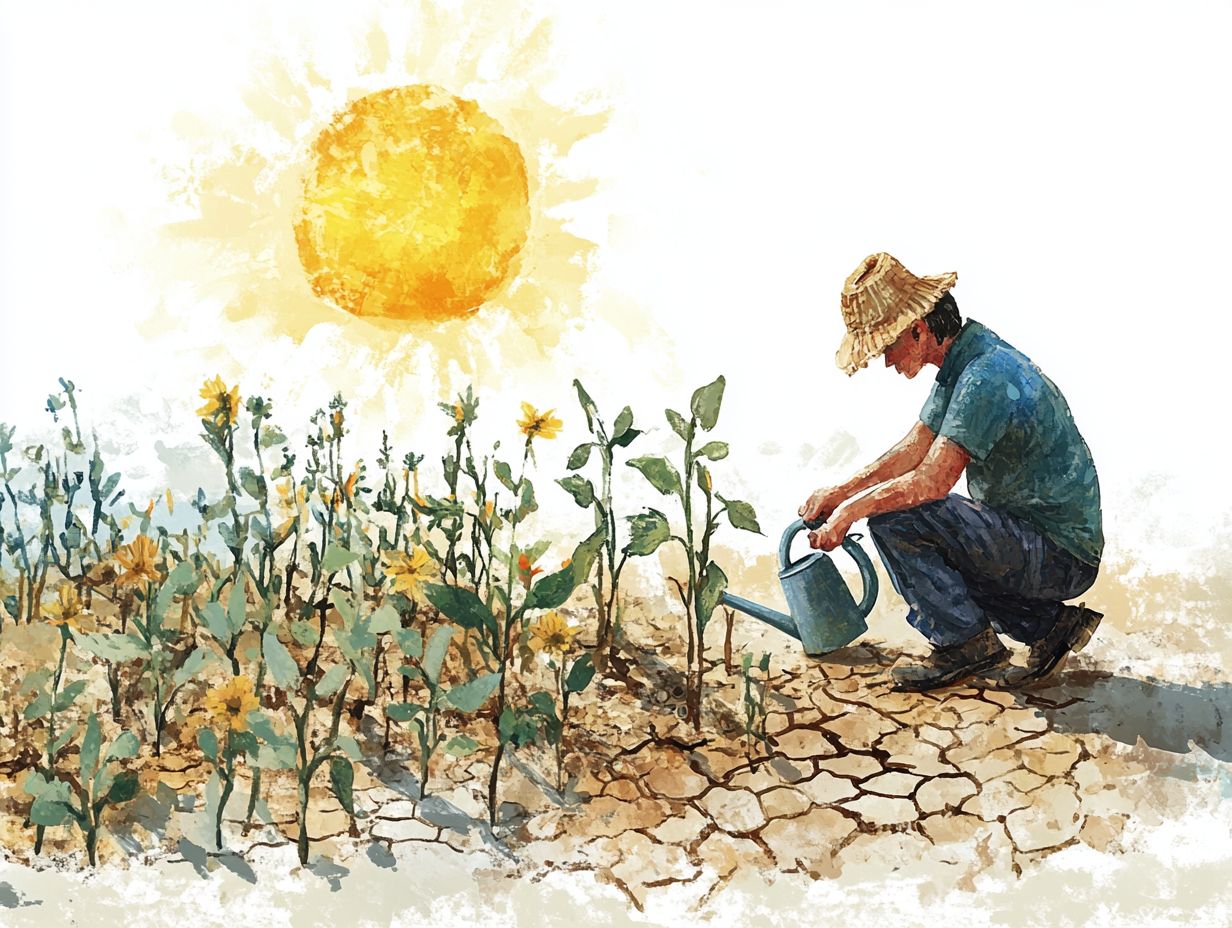
Watering and fertilization are essential elements in nurturing a drought garden. They ensure plants get the moisture and nutrients they need to flourish.
To achieve the best results, focus on deep watering techniques that encourage roots to dive deeper into the soil. This enhances their resilience against drought conditions. Water less frequently but more thoroughly, allowing moisture to penetrate deeply rather than merely soaking the surface. Create a smart watering schedule that works with the weather to improve efficiency.
Fertilization acts as a crucial support system, promoting plant health and reinforcing natural defenses. Choose slow-release fertilizers and add organic matter. This nourishes plants gradually, helping them survive dry spells.
Dealing with Pests and Diseases
Dealing with pests and diseases is crucial when managing a drought garden. Environmental stress can make plants more vulnerable to harm and affect their overall health.
In these challenging conditions, it’s essential to adopt vigilant monitoring strategies. These can help you detect any signs of stress or infestation early on. Regularly inspect plants for unusual discolorations, stunted growth, or the presence of insects. This is where methods to manage pests effectively come into play.
By combining cultural methods, biological controls (natural methods to control pests, like using beneficial insects), and, when necessary, targeted chemical treatments, you can minimize the impact of pests while safeguarding the environment. Use resistant plant varieties and maintain healthy soil to bolster plant defenses, ensuring they thrive even during prolonged dry spells.
Frequently Asked Questions
What Are the Challenges of Drought Gardening?
Drought gardening, or gardening in areas with limited water supply, presents unique challenges for gardeners. Here are some frequently asked questions about the challenges of drought gardening, including essentials for starting a drought garden.
What are the main factors that contribute to drought gardening challenges?
The main challenges of drought gardening are lack of water, high temperatures, and dry soil. These factors make it difficult for plants to thrive and can lead to water stress and plant damage. To address these issues, consider exploring the top questions about drought gardening.
How do I determine if my garden is facing a drought challenge?
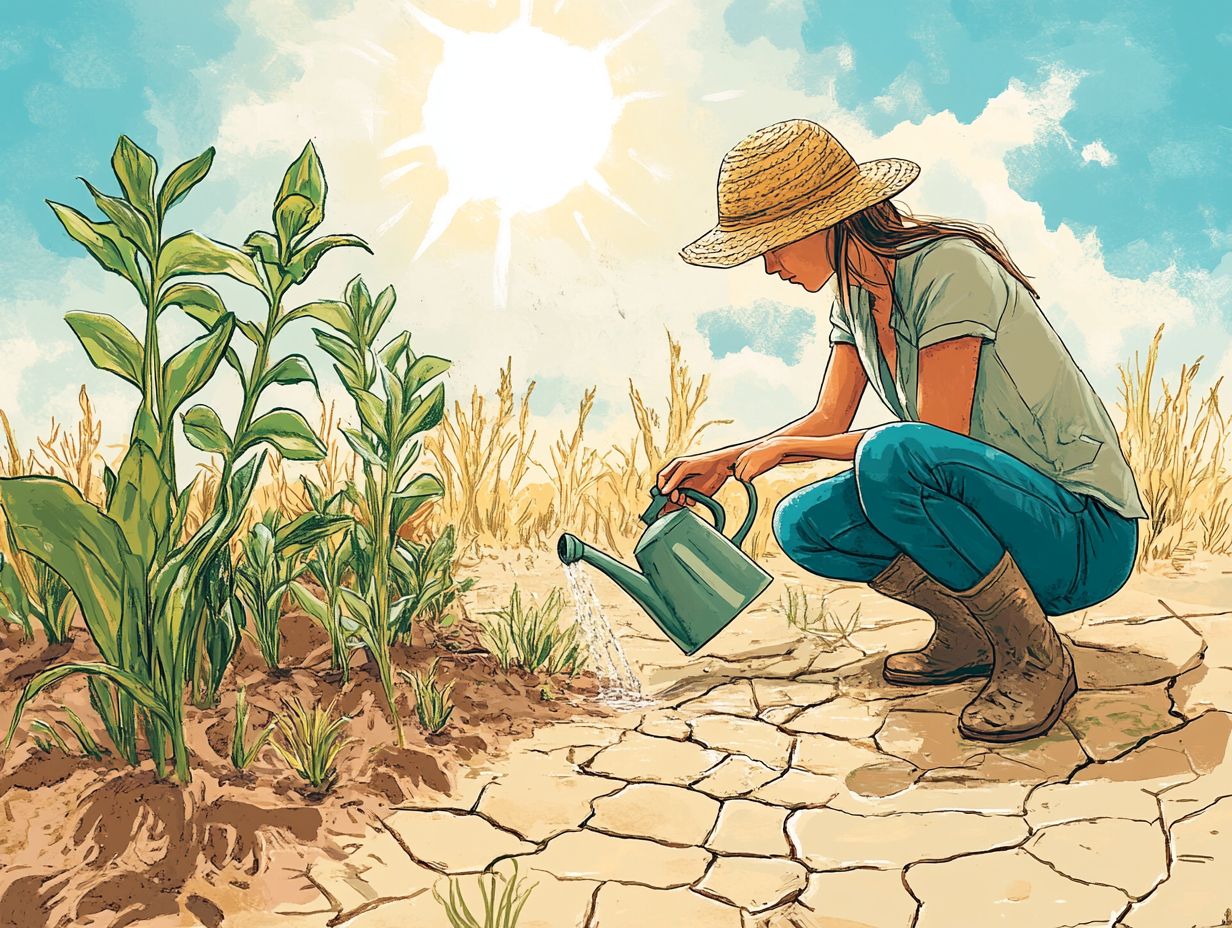
You can determine if your garden is facing a drought challenge by monitoring your water supply and soil moisture levels. If plants show signs of wilting or yellowing, it could indicate drought stress.
What are some strategies for conserving water in a drought garden?
Some strategies for conserving water in a drought garden include using mulch to retain moisture, planting drought-tolerant varieties, and timing watering to avoid evaporation.
Are there any specific plants that are better suited for drought gardening?
Yes, many plants are better suited for drought gardening. Popular choices include succulents, cacti, and Mediterranean herbs like lavender and rosemary.
How can I protect my plants from the challenges of drought gardening?
To protect your plants from the challenges of drought gardening, use shade cloths to reduce sun exposure, install a drip irrigation system, and choose drought-tolerant plants that require less water.
What are some alternative gardening methods that can help overcome the challenges of drought gardening?
Some alternative gardening methods that can help overcome the challenges of drought gardening include hydroponics, xeriscaping, and avoiding common mistakes in drought gardening by using rainwater harvesting systems to collect and reuse water.

